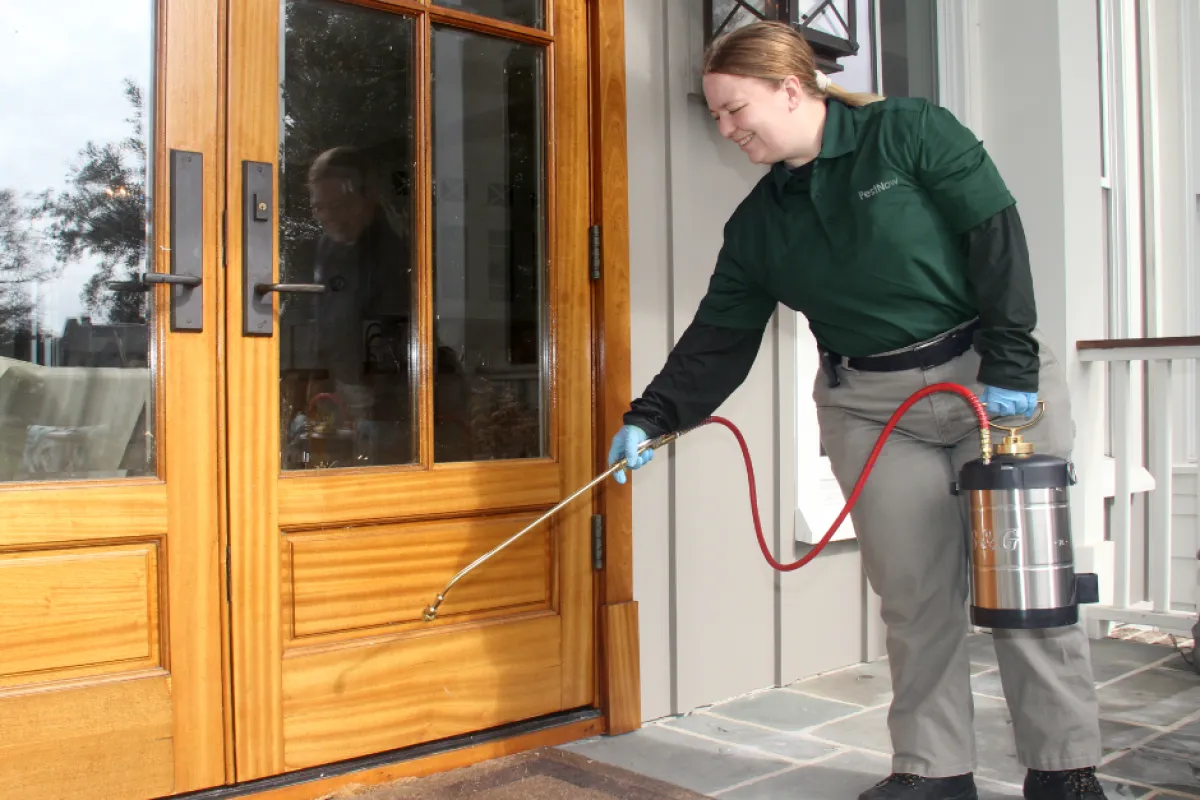Quality A1 Pest Control Services Charlotte - Secure Your Home
Quality A1 Pest Control Services Charlotte - Secure Your Home
Blog Article
Bed Pest Therapy Break Down: Contrasting Chemical Vs. Non-Chemical Solutions
In the world of parasite control, especially when handling the persistent concern of bed pests, the choice in between chemical and non-chemical treatment options can be an essential one. Both strategies offer distinctive benefits and downsides, affecting aspects such as performance, safety and security factors to consider, and total price. By examining the nuanced information of each technique, a clearer understanding of which path to seek in addressing a bed pest problem can be obtained.
Efficiency of Chemical Treatments
Chemical therapies for bed bug infestations have been commonly identified for their rapid and potent efficacy in getting rid of these insects. When considering the efficiency of chemical treatments, it is critical to recognize that they can give a fast and detailed service to a bed bug issue. Specialist pest control operators often count on pesticides to target bed insects at various stages of their life process, consisting of fairies, eggs, and grownups. These chemicals commonly work by interfering with the bed pests' nerves, leading to paralysis and ultimate fatality.
Additionally, chemical therapies have the advantage of offering recurring results, indicating that they can proceed to eliminate bed bugs even after the initial application. This recurring activity is particularly advantageous in combating any potential re-infestations. Additionally, the rapid activity of chemical therapies can bring alleviation to people facing extreme bed bug invasions, enabling them to gain back control of their living spaces rapidly.
Safety Worry About Chemical Solutions
One important facet that calls for cautious consideration when utilizing chemical remedies for bed pest treatment is guaranteeing the safety of passengers and the environment. While chemical therapies can be effective in removing bed insects, they might posture risks if not managed properly. Among the primary safety interest in chemical options is the prospective injury they can cause to human wellness. Exposure to specific chemicals utilized in bed bug treatments can lead to respiratory system problems, skin inflammation, or various other negative reactions, especially in individuals with pre-existing conditions or sensitivities. Additionally, improper application or dosage of chemical pesticides can lead to hazardous deposits lingering in the cured location, posing long-lasting wellness threats to residents.
In addition, the ecological influence of chemical options is an additional substantial factor to consider. Some pesticides used in bed insect treatments may be harmful to useful insects, wild animals, and communities if they leach right into the dirt or water systems. It is necessary to make use of chemical therapies deliberately, complying with safety and security standards, and considering much less poisonous alternatives to reduce these dangers and guarantee the reliable and risk-free monitoring of bed bug YOURURL.com problems.
Benefits of Non-Chemical Techniques
Considering the possible security worries and environmental effect connected with chemical solutions for bed bug treatment, checking out non-chemical strategies presents an appealing option with several distinctive benefits. Non-chemical treatments are environmentally pleasant, as they do not contribute to air or water contamination, making them a lasting selection for parasite control.
In addition, non-chemical options can be efficient in targeting bed pests, consisting of hard-to-reach areas where chemical therapies may not penetrate. Methods such as heat treatment, vacuuming, heavy steam cleansing, and mattress coverings supply extensive removal without the use of dangerous chemicals. Additionally, non-chemical techniques can be less turbulent, calling for marginal preparation and enabling quicker reentry into treated locations. Overall, choosing non-chemical bed pest treatment methods not just focuses on safety and security and ecological security however additionally guarantees extensive and reliable parasite control.
Limitations of Non-Chemical Treatments

Additionally, non-chemical treatments usually require multiple applications to achieve effective removal. This can be lengthy and may not always ensure total elimination of all bed insects and their eggs, particularly in hidden or hard-to-reach locations.
Additionally, the success of non-chemical therapies greatly relies upon appropriate execution and thoroughness, which can be testing for people without expert knowledge. Inadequate application of non-chemical methods may result in incomplete elimination, resulting in consistent problems and the demand for added therapies.
For that reason, while non-chemical therapies have their advantages, it is vital to acknowledge these restrictions and consider them when determining one of the most effective technique for taking care of bed bug infestations.
Price Comparison: Chemical Vs. Non-Chemical Options
Given the limitations linked with non-chemical treatments, a vital facet to assess in the context of bed pest monitoring is the price comparison in between chemical and non-chemical choices. In contrast, non-chemical therapies like heat therapy or vapor can be extra costly, with prices ranging from $1,000 to $6,000 for a whole home. While the initial expense of chemical treatments may seem lower, numerous therapies might be called for to fully eradicate the problem, possibly increasing the general expense.
Verdict

Considering the prospective security worries and environmental influence associated with chemical remedies for bed why not try here insect treatment, discovering non-chemical methods presents an encouraging option with several unique benefits.Provided the restrictions linked with non-chemical therapies, an important aspect to assess in the context of bed insect monitoring is the expense contrast between chemical and non-chemical choices. In contrast, non-chemical treatments like warm treatment or steam can be more expensive, with costs varying from $1,000 to $6,000 for an entire home. While the initial expense of chemical therapies might seem lower, several treatments may be called for to completely remove the infestation, potentially raising the general price.In final thought, when contrasting chemical and non-chemical bed pest treatment alternatives, it is important to think about efficiency, safety, advantages, constraints, and cost.
Report this page